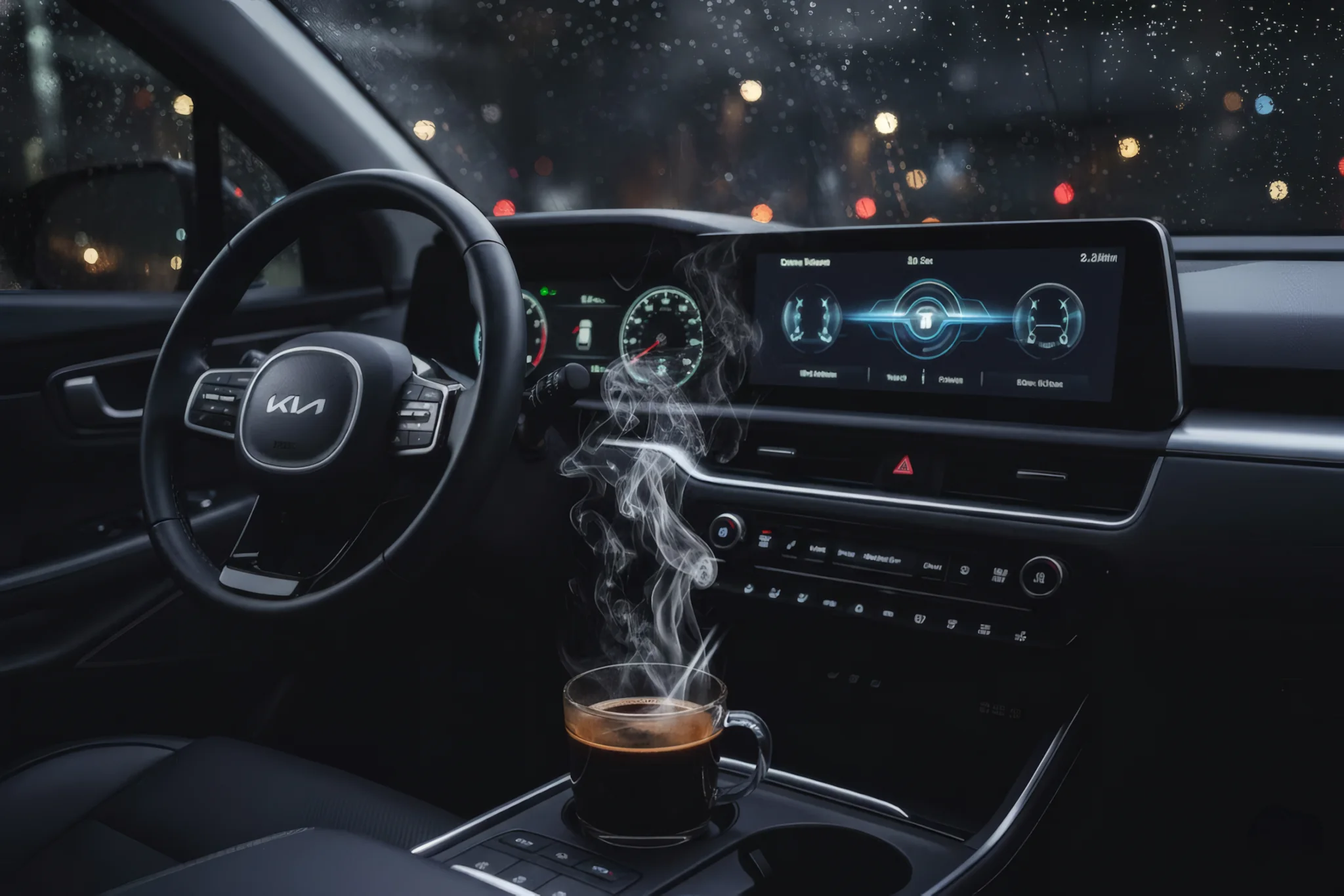I recently bought a De’Longhi Rivelia coffee machine, and it made me realize something absurd: a countertop appliance has a better user experience than my Kia Sorento PHEV. And I’m not just talking about aesthetics. I’m talking about fundamental usability that respects how humans actually want to use their devices.
Don’t get me wrong – I love my car. We weren’t ready to commit to an all-electric car when we bought it in 2022, and we needed a 3 row SUV to handle a family of 5 (and often 6). It was a good fit.
The Coffee Machine That Gets It
The coffee machine was an unexpected surprise. I needed something with multiple bean hoppers, so my choices were quickly narrowed. There were lots of great reviews (even mentioning the nice interface), and it was on a great sale, so I pounced.
The touchscreen is high-resolution and responsive. The menu structure makes sense. Want a cappuccino? Two taps. Want to adjust the milk foam? Intuitive and it walks you through it. Want to save your preferences? Done in seconds and it will suggest you save after you’ve made the coffee a few times.
Impressively, the machine anticipates what you actually want to do. It remembers what you do over time, at each point in the day, and moves those options to the front of the list.
In short, someone at De’Longhi actually thought about the user experience, tested it in real life thousands of times.
…And the Car That Doesn’t
Now let’s talk about my Kia Sorento PHEV. I think it’s a pretty vehicle. The user experience and the dashboard tech was a big selling feature for us. It’s a plug-in hybrid, which means we run on electric power for most of our daily driving (it’s got a 51km range and we rarely drive that far). Except there’s one maddening design flaw that makes me question whether anyone at Kia actually uses their own vehicles. At least in the this climate.
You cannot turn on the vent without firing up the gas engine.
Let me repeat that: In a hybrid vehicle designed to run on electric power, you cannot circulate fresh air through the cabin without forcing the combustion engine to turn on. I don’t want heat. I don’t want AC. Just... air movement.
On a mild spring morning, there is often a slight fog on the windshield. I want some fresh air circulation. I turn the fan on. The gas engine roars to life. I don’t need heat. I don’t need cooling. I just want outside air blowing on that condensation. In Kia’s interface logic, wanting to ventilate your car means burning gas.
It’s an incredibly human moment. You can almost feel the engineers saying, “Who would ever want just fresh air?”
Spoiler: everyone who drives anywhere it’s damp. Or cold.
The Real-World Test Nobody Did
This isn’t a minor inconvenience – it’s a fundamental misunderstanding of how people use a hybrid vehicle in real life. And it’s obvious the moment you try to use the car as intended.
It’s such an odd omission, since every other vehicle I’ve owned or used has it by default. Did the Kia engineers overlook it? Just assumed everyone either wants cold or hot, but not outside air? Who knows really. Maybe it’s less of an issue in Korea. But all the more reason to text where the vehicle will be sold.
The Point: You Don’t See These Things Until You Test Them
This isn’t about cars or coffee makers. It’s about user testing — or the lack of it.
Every time I turn on my car’s vent and hear the engine kick in unnecessarily, I think about all the products shipping with equally obvious flaws. Not because the teams are incompetent, but because nobody tested the obvious.
De’Longhi clearly put prototypes in front of actual users and watched what happened. Kia, on the other hand, seems to have designed for an idealized driver who only lives in temperate conditions with never-fogged windshield.
Your users will find these issues instantly. The question is: will they find them before or after launch?
At Fractional Xperience, this is exactly why we push our clients to test well in advance, in front of real endusers.
Because no matter how experienced your designers or engineers are, you will always miss something obvious until you hand it to a real user and watch them struggle, hesitate, or do something you didn’t predict.
User testing isn’t about validating your design. It’s about humbling it.
Moral of the Story
A coffee machine shouldn’t have better UX than a car. But when it does, it tells you everything you need to know about the value of real user testing.
Test early. Test often. Test the obvious. Because if you don’t, your users will, and they’ll tell everyone about it.
If you’re not putting your product in front of users early and often, you’re designing in the dark. So test early and test often. Because if you don’t, your users will – and they’ll tell everyone about it.


